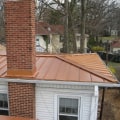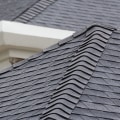It's essential to seal flat roofs as a preventive measure rather than waiting for leaks or ponds to form. Any signs of leaks, stagnation, or structural damage indicate that your roof needs to be coated. But even if you don't notice these signs, a flat roof should be sealed every five years to protect it from water damage. When do you need to maintain a flat roof? If you have noticed water accumulating on your roof, it's best to consult a roofing contractor as soon as possible, as your flat roof will sooner or later form a leak and cause further damage to the interior structure.
However, regardless of any pond, resealing your roof once every five years is a good measure to prevent any water damage to your home or business. The frequency may change due to harsher climates. Constant rain and snow can wear down the flat roof. Therefore, it's best to have it checked regularly by a contractor for any damage caused by the weather. A flat roof that isn't maintained usually lasts about 10 years.
It's a good idea to plan for a new coating every five years to ensure its integrity and continued performance. If your flat roof is less than five years old, but you have noticed the presence of cracks or accumulations of water, then you will want to coat it. Those cracks and the accumulation of water can cause more serious damage, whose repairs can cost much more than a new coating. And, if your flat roof is more than a decade old, even if there are no cracks or accumulated water, do your home or commercial building a favor and cover it up. The cladding of a flat roof must be done every five years.
The coating process helps to extend the life of the roof. In addition, the coating at least twice a decade maintains the heat-reflecting properties of the roof. The process is also important to ensure that the roof remains waterproof. Homes with a sloped roof are also excellent candidates for roof sealing, as they can protect shingles, shingles, or metal from environmental damage and prolong the overall lifespan. However, there's no need to seal a sloped roof as often because water is less likely to accumulate when the roof is sloped downward.
The sealant can gradually wear out over time, so it's ideal to reseal the sloped roof every two to three years. In general, sealing your roof is a very important part of keeping your home in good shape. Homes with flat roofs should be especially vigilant that the roof is inspected and resealed regularly and is recommended once a year. Sloped roofs are stronger as water is not allowed to accumulate, so they can be resealed every two to three years. Considering how your roof is exposed to the elements is key to deciding when to reseal the roof. A roof that withstands a lot of sunlight and rain will need more maintenance than a roof in a cool, cloudy climate.
In addition, hiring a professional ensures that the sealing is done according to the strictest quality level so that no stitches are lost or sealant is missing. The damage creates larger pores in the roof surface and may require more sealant to effectively protect the roof. If you can paint, you can probably seal your flat roof DIY style, but even if you have to hire someone, it's not a very expensive job. A typical flat roof will last between 15 and 30 years, depending on the materials used, the weather conditions it must endure, and the maintenance you perform.
Roof sealing is an essential part of protecting your roof from the elements and extending its lifespan as much as possible. No matter what material your flat roof is made of, it will eventually begin to suffer from these extremes. Heavy rain can also wear away the sealant, so climates where heavy rains are common should consider inspecting their roofs more often to see if sealing them would be beneficial. A flat roof doesn't allow water to simply drain from the surface into the rain gutters, which means that the surface must be perfectly waterproof to prevent water from leaking into the building.
Flat roofs usually last about 10 years, but with a good quality coating applied correctly, you can expect them to last much longer than expected. Re-sealing is an important step in extending the life of your flat roof and protecting it from the elements. Roofs that have undergone regular cleaning tend to require re-sealing less frequently, as they will be in better condition right from the start. In windy weather, it's not uncommon for branches and other debris to fall onto the roof, where they can scratch or damage the roof sealant.
Deciding how often to seal your roof isn't always easy but there are some simple guidelines and tips that can make planning your next roof sealing appointment much easier. Cladding the roof means your roof will last longer. Aside from that, if you coat your flat roof at least twice in a decade, you'll be able to increase its heat-reflecting properties. What makes this important is that it will help you keep your roof waterproof.
Any good exterior home contractor will be able to guide you through this process and even establish a flat roof repair and maintenance contract with you...



